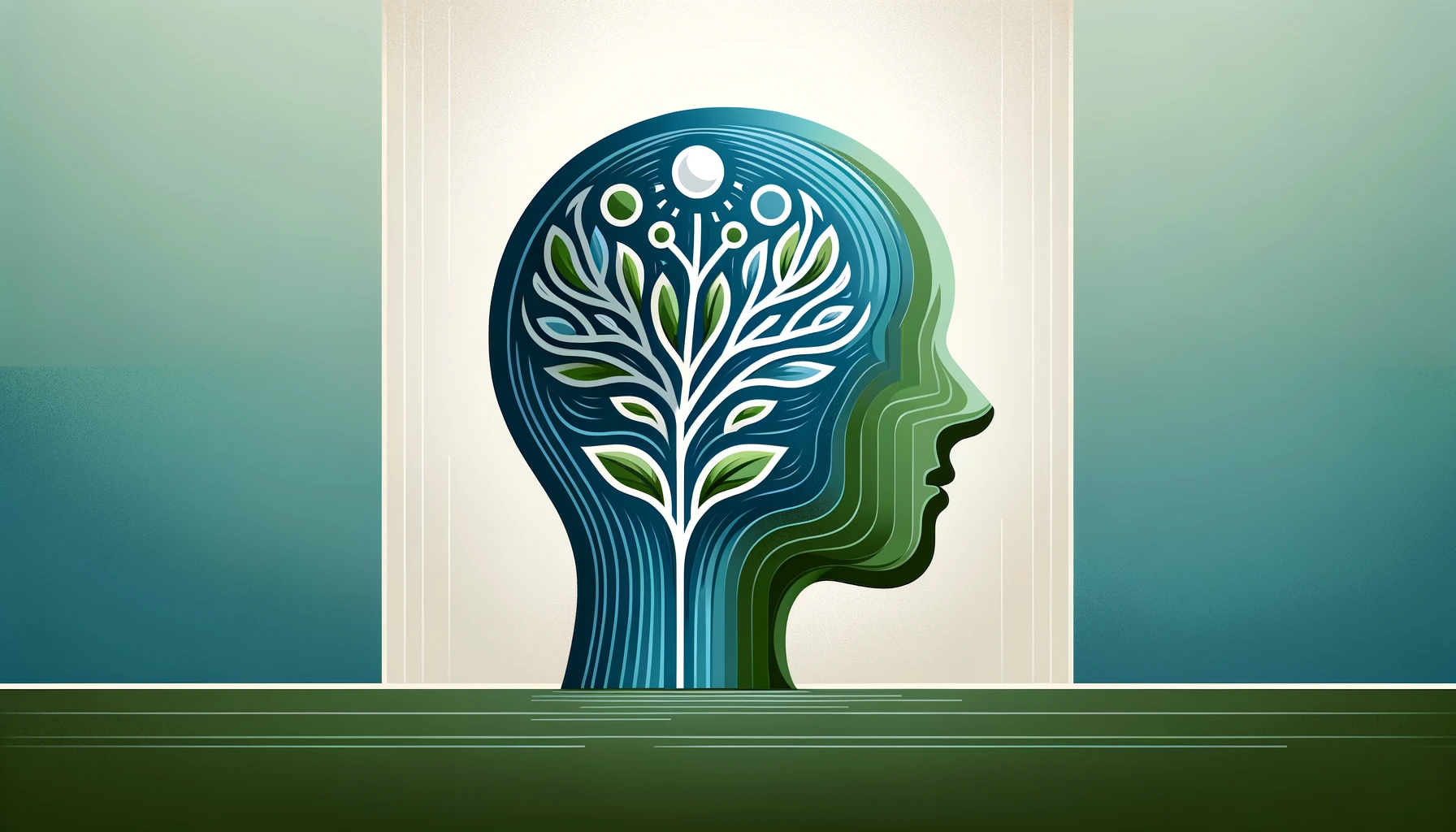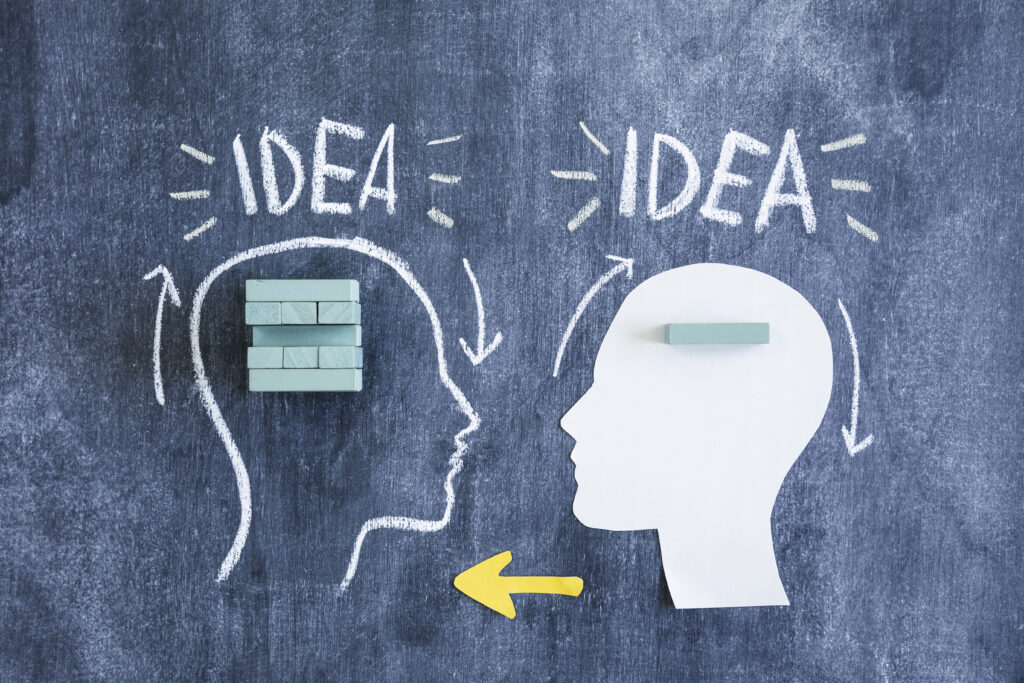
Developing a growth mindset is pivotal for personal and professional success. This transformative approach emphasizes the belief that abilities and intelligence can be developed through dedication and hard work. By adopting this outlook, individuals are more resilient in the face of challenges, viewing them as opportunities for growth rather than obstacles. Embracing a growth mindset fosters a passion for learning and a resilience that is essential for accomplishment in various aspects of life.
Cultivating a growth mindset involves acknowledging failures as stepping stones to progress, embracing feedback constructively, and seeking inspiration from the success of others. This blog post delves into practical strategies to nurture a growth mindset, explores its impact on achievement, and provides insights into fostering this mentality within oneself and others.
Understanding Growth Mindset

Definition of Growth Mindset
A growth mindset refers to the belief that one’s abilities and intelligence can be developed through dedication and hard work. People with a growth mindset believe that they can improve their skills and talents over time, rather than thinking that they are inherently fixed traits. This perspective fosters resilience, perseverance, and a willingness to embrace challenges as opportunities for growth.
Individuals with a growth mindset tend to view failures as learning experiences, understanding that setbacks are not indicative of their overall potential. They see effort as the path to mastery and seek constructive feedback to enhance their abilities further. This outlook on learning encourages continuous improvement and the exploration of new strategies to overcome obstacles.
The Role of Beliefs in Shaping Mindset
Beliefs play a crucial role in shaping an individual’s mindset. Those who possess a growth mindset firmly believe in their capacity for development, leading them to approach tasks with enthusiasm rather than trepidation. Their optimistic outlook enables them to confront challenges head-on without succumbing to self-doubt or fear of failure.
Conversely, individuals with a fixed mindset hold onto the notion that their abilities are predetermined and unchangeable. This limiting belief system hampers personal growth by fostering avoidance behavior when faced with difficulties or setbacks. As a result, they may shy away from taking risks or attempting new endeavors due to the fear of exposing inherent shortcomings.
The way people perceive themselves has a profound impact on how they approach various aspects of life—be it academics, career advancement, or personal relationships. Embracing a growth mindset empowers individuals to cultivate resilience and tenacity while navigating life’s challenges.
Exploring the Difference Between Growth and Fixed Mindsets

Characteristics
A growth mindset is characterized by the belief that abilities and intelligence can be developed over time. People with this mindset see challenges as opportunities to grow, embrace learning, and persist in the face of obstacles. They view failure as a chance to learn and improve rather than a reflection of their abilities.
On the other hand, individuals with a fixed mindset believe that their qualities are static and cannot be changed. They tend to avoid challenges for fear of failure, often giving up easily when faced with difficulties. Instead of seeing effort as a path to mastery, they may view it as fruitless if they don’t immediately succeed.
People with a growth mindset understand that putting in effort leads to improvement and success over time. This perspective fosters resilience and perseverance in the face of setbacks.
Benefits
Embracing a growth mindset has numerous benefits. It allows individuals to approach life with an open mind, ready to learn from experiences and develop new skills. When faced with challenges or criticism, those who possess this mentality remain open-minded instead of becoming defensive or defeated.
Moreover, research suggests that people who cultivate a growth mindset tend to achieve more in both academic and professional settings compared to those who have fixed mindsets. They are also more likely to seek out feedback for personal development rather than avoiding it due to fear of failure.
Individuals who adopt this outlook on life often experience increased motivation because they perceive effort as crucial for improvement rather than something futile if immediate success isn’t achieved.
Influence on Responses
The influence of different mindsets on responses becomes evident when facing challenges or setbacks. Those embracing a growth mindset respond positively by seeking solutions through perseverance even when things get tough; they see these moments as opportunities for self-improvement.
Conversely, individuals entrenched in a fixed mentality may feel overwhelmed by obstacles due to their belief that abilities are innate traits beyond change or development.
The Impact of Growth Mindset on Learning
Academic Success
A growth mindset has a profound impact on academic success. Individuals with this mindset believe that their abilities can be developed through dedication and hard work. This belief leads to a love for learning and resilience in the face of challenges. Students who embrace a growth mindset tend to outperform those with a fixed mindset, especially in subjects like math. They view mistakes as opportunities for learning and are more likely to seek constructive feedback.
Embracing a growth mindset allows students to approach difficult tasks with determination rather than avoidance. For example, when faced with a challenging math problem, students with a growth mindset will persist until they find the solution, while those with a fixed mindset may give up easily due to fear of failure.
Fostering Growth Mindset
Educators play an essential role in fostering a growth mindset in educational settings. By providing constructive feedback and praising effort rather than intelligence or talent, teachers can help students develop resilience and perseverance. Encouraging collaborative activities where mistakes are viewed as part of the learning process also contributes to cultivating a growth-oriented environment.
Incorporating real-world examples into lessons can demonstrate how successful individuals have overcome obstacles through hard work and dedication, reinforcing the idea that abilities can be developed over time. Teaching students about neuroplasticity—the brain’s ability to reorganize itself by forming new neural connections—can empower them to understand that their intelligence is not fixed but malleable.
Research Findings
Research has consistently shown the positive relationship between mindset and learning outcomes. Studies have demonstrated that students who adopt a growth-oriented perspective achieve higher grades compared to their peers who hold fixed beliefs about intelligence or talent.
For instance, one study found that seventh graders who received training on developing a growth mindset exhibited an increase in math scores compared to those without such training. Furthermore, research has indicated that embracing this mentality positively impacts motivation levels among learners across various age groups.
Overcoming Setbacks with a Growth Mindset
Reframing Setbacks
When faced with problems or challenges, individuals with a growth mindset view them as opportunities for improvement. They believe that setbacks are not permanent and can be overcome through effort and learning. This perspective allows them to reframe setbacks as chances to develop new skills, strategies, or approaches.
This attitude enables people to bounce back from failures and continue striving towards their goals. For example, when encountering academic difficulties, students with a growth mindset see these challenges as ways to enhance their understanding rather than insurmountable obstacles. This reframing helps them stay motivated and persistent in the face of adversity.
Developing Resilience
To cultivate resilience and foster a growth mindset, it’s essential to acknowledge that setbacks are an inherent part of life. Embracing this reality empowers individuals to approach challenges with determination instead of fear or avoidance. Seeking support from mentors or peers can provide valuable insights on how to navigate obstacles effectively.
Moreover, practicing self-compassion is crucial in developing resilience. Being kind and understanding towards oneself during tough times encourages perseverance and promotes a positive outlook on future endeavors. By acknowledging personal progress regardless of setbacks, individuals can maintain motivation while pursuing their objectives.
Examples of Overcoming Challenges
Numerous successful individuals have demonstrated the power of a growth mindset in overcoming significant adversities. For instance, J.K. Rowling encountered multiple rejections before finding success with her “Harry Potter” series; however, she persisted by viewing rejection as an opportunity for improvement rather than defeat.
Similarly, basketball legend Michael Jordan was initially cut from his high school team but used this setback as motivation to improve his skills relentlessly. His growth-oriented mentality enabled him not only to make the team the following year but also become one of the greatest athletes in history.
Key Takeaways:
- Viewing setbacks as opportunities for growth fosters resilience.
- Seeking support from others aids in navigating challenges effectively.
- Practicing self-compassion is vital for maintaining motivation during difficult times.
Debunking Myths About Growth Mindset
Common Misconceptions
Some people believe that having a growth mindset means being relentlessly positive all the time. However, this is not entirely accurate. In reality, individuals with a growth mindset acknowledge their challenges and setbacks but choose to approach them with resilience and determination. Another misconception is that having a growth mindset eliminates the need for effort or hard work. On the contrary, individuals with a growth mindset understand that putting in effort and seeking help when needed are crucial components of achieving success.
Contrary to popular belief, simply telling someone to have a growth mindset does not guarantee its development. It’s essential to understand that developing this type of mentality requires consistent effort and practice over time. Some may mistakenly assume that those who possess a growth mindset never experience self-doubt or negative thoughts about their abilities. In reality, even individuals with strong growth mindsets encounter moments of uncertainty; however, they view these moments as opportunities for learning and improvement rather than insurmountable obstacles.
Evidence-Based Refutation
Research conducted by Carol Dweck has debunked several myths surrounding growth mindset through evidence-based findings. Dweck emphasizes the importance of understanding that intelligence and abilities can be developed over time through dedication and hard work rather than being fixed traits determined at birth.
One common myth refuted by Dweck’s research is the notion that praising effort alone will foster a growth mindset in individuals. While acknowledging effort is important, it should be coupled with specific feedback on strategies used or progress made towards goals in order to effectively cultivate this type of mentality.
Moreover, Dweck’s studies have highlighted how embracing challenges plays an integral role in nurturing a growth mindset among individuals. Contrary to misconceptions suggesting otherwise, facing difficulties head-on while maintaining perseverance contributes significantly to one’s ability to develop resilience and adaptability.
In addition to addressing these misconceptions through empirical evidence, it’s important for educators and parents alike to recognize the significance of fostering an environment where mistakes are viewed as opportunities for learning rather than sources of shame or embarrassment.
Developing a Growth Mindset in 8 Steps
Embracing Challenges
Embracing challenges is an essential step in developing a growth mindset. Instead of avoiding difficulties, individuals with a growth mindset see them as opportunities for learning and improvement. For example, when faced with a challenging task or project, they approach it with the belief that their effort and perseverance will lead to growth. By embracing challenges, individuals can develop resilience and enhance their problem-solving skills.
Individuals should also recognize that setbacks are part of the learning process. When encountering obstacles or failures, those with a growth mindset view them as temporary hurdles rather than insurmountable barriers. They understand that setbacks provide valuable insights and feedback that can contribute to personal development.
Cultivating Self-Reflection
Incorporating self-reflection into the process of developing a growth mindset is crucial for continuous improvement. Through self-reflection, individuals gain insight into their strengths and areas for development. This introspective practice allows them to identify patterns of thinking or behavior that may be hindering their progress.
Self-reflection also involves seeking feedback from others and being open to constructive criticism. By soliciting input from peers, mentors, or supervisors, individuals can gain different perspectives on their performance and behaviors. This external feedback serves as an opportunity for further self-improvement by identifying blind spots or areas needing refinement.
Fostering Curiosity
Fostering curiosity is another fundamental aspect of nurturing a growth mindset. Individuals who possess this trait have an intrinsic motivation to learn new things and explore unfamiliar territories without fear of failure or judgment.
By maintaining curiosity about various subjects or skills, people can expand their knowledge base while remaining adaptable in ever-changing environments. Curiosity fuels creativity and innovation by encouraging individuals to question conventional wisdom and seek alternative solutions.
Embracing the Power of “Yet”
Understanding Growth Mindset
The growth mindset involves understanding the power of “not yet” in the context of learning and progress. It’s about embracing the idea that one hasn’t mastered a skill or reached a goal yet, but with effort and perseverance, it’s possible.
This new psychology emphasizes how using the word “yet” can shift perspectives on learning and development. When individuals recognize that they haven’t achieved something yet, it opens up possibilities for growth and improvement.
Applying “Yet” in Goal-Setting
Encouraging the use of “yet” in goal-setting and self-talk is crucial when developing a growth mindset. Instead of saying, “I can’t do this,” individuals can reframe their thinking by saying, “I can’t do this yet.” This simple shift in language acknowledges current limitations while expressing confidence in future capabilities.
In everyday life, using the word “yet” empowers people to view challenges as temporary setbacks rather than permanent failures. For example, instead of feeling defeated after receiving constructive criticism at work, an individual with a growth mindset might say, “I haven’t mastered this skill yet, but I’m willing to put in the effort to improve.”
Teaching Growth Mindset to Children in 4 Weeks
Age-Appropriate Strategies
Children can develop a growth mindset through age-appropriate strategies. For instance, parents and teachers can use storytelling to illustrate the concept. By sharing stories of individuals who faced challenges but persisted, children learn that abilities can be developed. Using relatable examples, like learning to ride a bike or mastering a new game, helps children understand that progress comes with effort.
Another effective strategy is praising efforts rather than intelligence or talent. When adults acknowledge the hard work and perseverance children put into their tasks, it reinforces the idea that dedication leads to improvement. Moreover, encouraging children to take on challenges fosters resilience and determination.
Activities and Exercises
Engaging activities and exercises play a crucial role in promoting a growth mindset in kids. One such activity is creating “mistake zones” where making errors is celebrated as an opportunity for learning instead of being frowned upon. This helps children view mistakes as part of the learning process rather than signs of failure.
Similarly, setting achievable goals with clear steps encourages persistence and problem-solving skills in children. Breaking down larger tasks into smaller ones makes them less daunting while teaching kids about gradual progress towards success.
Furthermore, using positive affirmations can boost self-confidence in young learners. Encouraging phrases like “I’ll give it another try” or “I believe I can improve with practice” instill optimism and resilience in facing challenges.
Long-Term Impact
Instilling a growth mindset at an early age has long-term benefits for children’s development. Research shows that kids with a growth mindset are more likely to embrace challenges and exhibit higher levels of motivation when faced with difficulties later in life.
Moreover, these individuals tend to have better academic performance due to their willingness to put effort into their studies even when they encounter setbacks along the way. They also display stronger problem-solving skills as they approach obstacles with determination rather than avoidance.
Modeling a Growth Mindset for Others

Leading by Example
Demonstrating a growth mindset through one’s own actions and behavior can be incredibly influential. When individuals consistently show resilience, perseverance, and an eagerness to learn from their mistakes, it sets a powerful example for others to follow. For instance, when facing challenges or setbacks, openly discussing the strategies used to overcome them can illustrate the application of a growth mindset in real-life situations.
Sharing personal stories of overcoming obstacles and embracing failures as opportunities for learning can effectively convey the principles of a growth mindset. By showcasing how they approach difficulties with determination and adaptability, individuals can inspire others to adopt similar attitudes towards their own challenges.
Communicating Value
Communicating the value of continuous improvement is essential in inspiring others to embrace a growth mindset. Expressing how learning new skills or gaining knowledge contributes not only to personal development but also overall success can motivate others to pursue self-improvement actively. Moreover, highlighting examples where adopting this mentality has led to positive outcomes reinforces its significance.
Furthermore, emphasizing that abilities are not fixed traits but rather qualities that can be developed over time encourages people around us to view challenges as opportunities for growth rather than insurmountable obstacles.
Creating an Encouraging Environment
Establishing an environment that fosters and rewards a growth mindset is crucial in promoting its adoption among peers or team members. This involves acknowledging efforts put forth towards improvement regardless of outcomes achieved—praising dedication and hard work rather than solely focusing on accomplishments helps reinforce the importance of effort in achieving success.
Moreover, providing resources such as learning materials or mentorship opportunities demonstrates commitment towards supporting continual development within the community or organization. Creating spaces where individuals feel comfortable seeking help without fear of judgment encourages collaboration and knowledge-sharing—a fundamental aspect of nurturing a culture centered around continuous improvement.
Closing Thoughts
Understanding the power of a growth mindset is crucial for personal and professional development. Embracing challenges, persisting in the face of setbacks, and seeing effort as the path to mastery are all hallmarks of this mindset. By debunking myths and providing practical steps for development, individuals can cultivate a growth mindset and inspire others to do the same. The impact of a growth mindset on learning and resilience cannot be overstated, making it an essential concept to integrate into both educational and organizational settings.
Take the first step towards fostering a growth mindset by implementing the 8 practical steps outlined in this article. Encourage others to embrace the power of “yet” and model a growth mindset for those around you. By collectively promoting a culture of continuous improvement and resilience, individuals and communities can experience transformative growth.
Featured Image courtesy of DALL-E by ChatGPT
